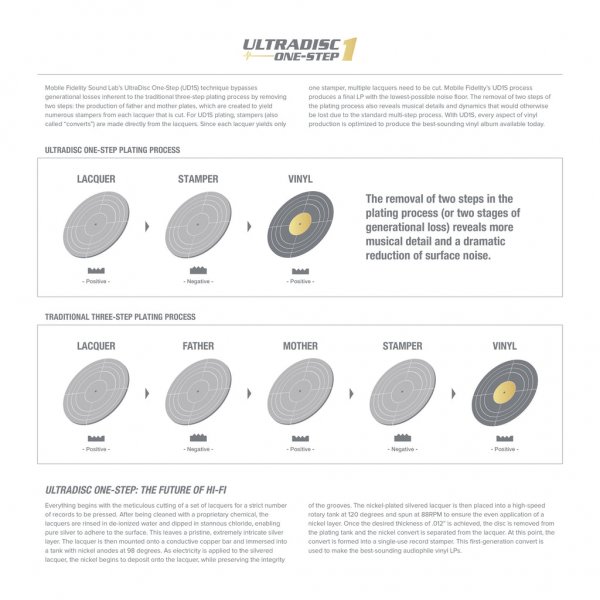MoFi is just another company trying to make money, as are the magazines
Always better to be forthright with your customers while trying to make more money.
MoFi is just another company trying to make money, as are the magazines
Robert Harley wrote: “. . . the proof of the pudding is in the tasting.” and “The MoFi albums and One-Step LPs that I own sound particularly great.” I personally don’t think this view, by itself, if true, puts Robert on “MoFi’s side not readers
i thought that was crazy stuff then, still crazy stuff now.For those of you intently following this MoFi Predicament, I heartily suggest reading the historic piece linked below. It will provide context and background regarding MoFi's thinking and future adoption of DSD as a format and a technology. Do note the names of all those present and be mindful of those individuals who are still with MoFi and what their roles were back in the day.
https://positive-feedback.com/Issue1/MoFiDSD.htm


Respectfully, I think this view is too simplistic. My main point, suggested above, is that there are separate issues here.
Robert Harley wrote: “. . . the proof of the pudding is in the tasting.” and “The MoFi albums and One-Step LPs that I own sound particularly great.” I personally don’t think this view, by itself, if true, puts Robert on “MoFi’s side not readers’.”
But I understand why you feel the way you do.

Our davidavdavid informed me that Mobile Fidelity has, once again, changed the visual workflow description of its Ultra Disc One Step Process:
View attachment 98793
Note that the representation of a reel-to-reel tape as the first step has been removed completely.
Note, more importantly, that any reference to the DSD conversion step also has been eliminated! How does hiding — once again — the digital conversion step fulfill Jim Davis’ promise of transparency going forward?
Isn't the inclusion of a 30 ips - to - DSD 256 (as on the new MJ Thriller coming out later this month) an additional step, which would make it a two-step? What's with the puffery? I'm like Robert Plant; I'm thru with the two-step.These MoFi conversations have been shut down over on Hoffman forums...
Looking at spectrogams of the One-Steps I own, and particularly when comparing them to original pressings I own, I am now concerned. I'd urgently like some clarification from MoFi on this.
Isn't the inclusion of a 30 ips - to - DSD 256 (as on the new MJ Thriller coming out later this month) an additional step, which would make it a two-step? What's with the puffery? I'm like Robert Plant; I'm thru with the two-step.
BTW, how do you like your Bardo? I've been very curious about that table.
| Steve Williams Site Founder | Site Owner | Administrator | Ron Resnick Site Owner | Administrator | Julian (The Fixer) Website Build | Marketing Managersing |






